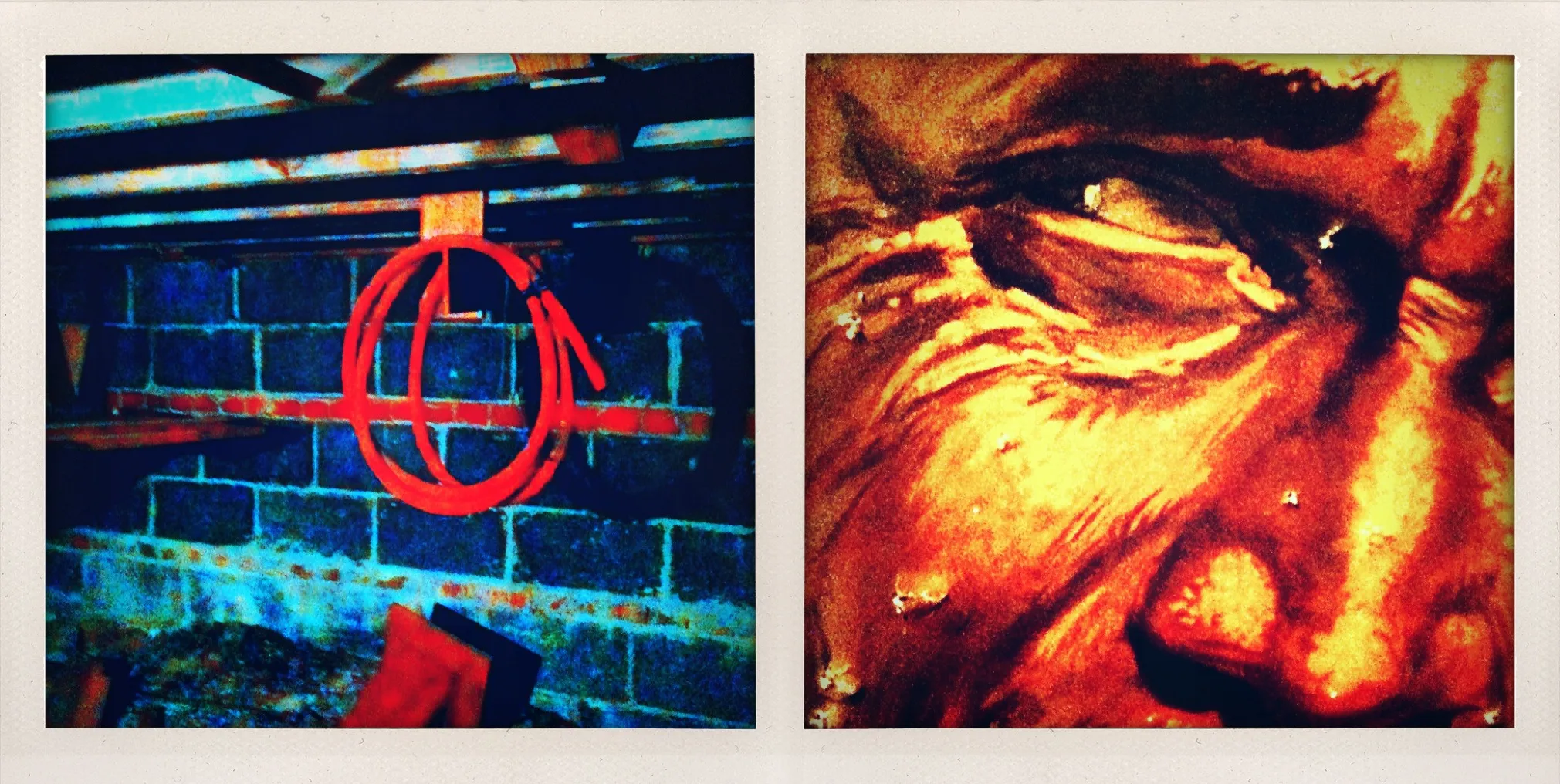Texas

This diptych pairs a coiled red hose hanging in a basement with a sun-damaged poster of a man’s face. The hose’s loop evokes a lariat, gesturing toward Western cowboy mythology, while remaining inert against industrial cement blocks. The face on the right—blistered, torn, punctured—shows Texas masculinity literally deteriorating, its surface damage mimicking sweat beads under imagined heat.
Both images present remnants rather than active subjects: a tool without a hand, a face without context. The work examines how regional identity is constructed from such fragments—labor symbols and masculine archetypes that persist as cultural shorthand even as they decay. Red unifies the panels, moving from coiled object to scorched flesh, linking dormant potential with fading mythology.
Essay written: November 2025